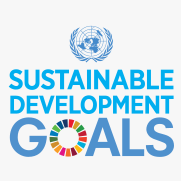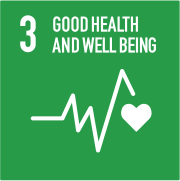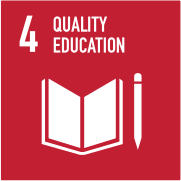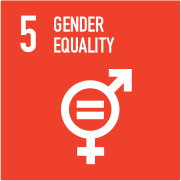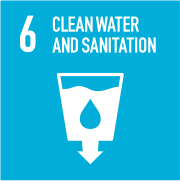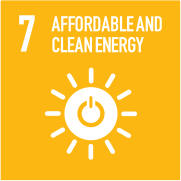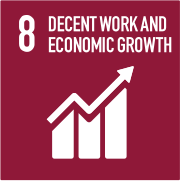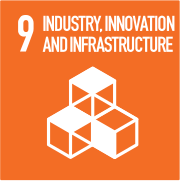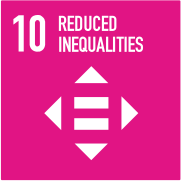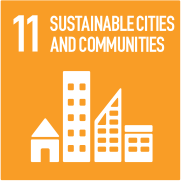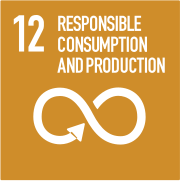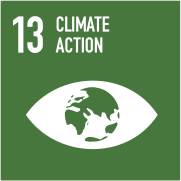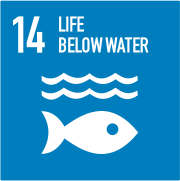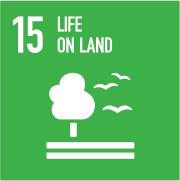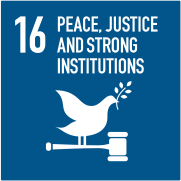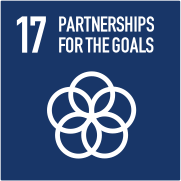SDG Compendium: SDG 14 - Life Below Water
SeaStuff – All about marine life around the Maltese islands and beyond
Website includes an A-Z list of species, a guide how to see and observe marine life, links to articles/weblinks on how to help protect the sea, tips on snorkelling, and lots of videos showing the different marine life observed in the seas around Malta and Gozo and Antigua.
MoreBeMED 20. Tourism and its impact on the Environment
Title Tourism and its impact on the Environment Author Audrey Gauci Age Guide Year 10-11 Subject Area European Studies Preparation Time Research on the impact of tourists on the environment – especially in relation to marine litter. Preparation of interview / questionnaires to conduct an investigation in a touristic village Estimated Duration 40 mins – reporting skills 40 mins – creation of investigation 40 mins – evaluation and reporting of investigation Site Any touristic locality Educational objectives Develop one of the European Studies projects by investigating and reporting on tourism and its impact on marine litter. Project Titles – The Impact of Tourism on the Environment Research, investigate and critically analyse themes: Protection of the Environment Candidates should be able to: – identify and understand the sources of air, land, water, noise and light pollution. – demonstrate some awareness of the possible environmental damage and solutions through the following case studies: the Mediterranean Sea and the Blue Plan. – identify and explain preventive measures to lessen their impact. – demonstrate an understanding of the extent to which modern farming practices, industry, tourism and transportation in Europe are responsible for environmental damage. Sustainable Development Candidates should be able to: – identify and understand the conflict of interest inherent between conservation and development in Europe, especially in the Mediterranean regions. Learning Outcomes Information management: – I can define the term sustainable development and its three pillars: economic, social, environmental. – I can analyse and explain the term biodiversity. I can discuss some of the threats it is experiencing, e.g. urbanisation, deforestation, over hunting/fishing. – Through examples I can identify and list conflicts of interest between economic development and environmental conservation. – I can discuss the concept of marine sustainability and pollution prevention giving examples drawn from the Mediterranean area, e.g. fisheries policy , Blue plan, Blue flags. – I can define and discuss the concept of Blue flag in terms of sustainable development of beaches and marinas. – I can analyse the benefits of having a sustainable fishing industry in the Mediterranean, drawing on examples of the bluefin tuna and swordfish. – I am aware of which sources I can consult to learn more about the EU’s environment and fisheries policies. – I can actively participate in processes and encourage negotiations for alternative sustainable futures. – I will challenge unsustainable practices across educational systems, including at the institutional level. Link to SDGs SDG 4: Quality education for all SDG 11: Sustainable Cities and Community SDG 13: Climate Change SDG 14: Life below water SDG 15: Life on land Educational resources required 1. Video tutorials on reporting: https://www.yre.global/video-tutorials 2. Interview guide: https://www.scholastic.com/teachers/articles/teaching-content/how-conduct-journalistic-interview/ 3. Case study on Sustainable tourism:- https://www.yre.global/international-collaboration-2/2020/9/23/sustainable-tourism-is-it-possible Remote preparation As part of their European Studies project work, student need to investigate and draw a report on one of 5 topics. One of the themes is Tourism and its impact on the Environment. Since both investigation and reporting are required, a session on appropriate reporting skills is carried out before the students actually go outside the school. Informative tutorials can be accessed online (Educational …
MoreBeMED 19. Gathering data to measure the extent of beach litter on a beach – Biology/Science Fieldwork
Title Gathering data to measure the extent of beach litter on a beach – Biology/Science Fieldwork Author Cynthia Caruana Age Guide Year 8–11 Subject Area Integrated Science, Biology, Education for Sustainable Development Preparation Time 30 minutes Estimated Duration 120 minutes on site 60 minutes follow-up for learners (in case of report or publication) Site Rocky/ Sandy beach of your own choice All learning resources are being provided for: Golden Bay Sandy Beach, Għajn Tuffieħa in Malta Resources can be adapted for other beaches. Educational objectives – Learners will investigate the litter that may be found at the beach, including its origin and possible method of dispersal as well as identify whether litter is biodegradable and non-biodegradable. – Learners will assist in a clean-up and learn to dispose of the litter found on the beach in their appropriate waste bag. – Learners will use simple calculations to find the area studied and the percentage frequency of the litter found as well as weighing mass of micro-plastics and waste found. – Learners will use observation skills, estimation, data collection and skills of analysis together with teamwork. Learning Outcomes – I can describe what is littering the beach and investigate the frequency of the most common litter items. – I understand the relationship between humans and marine organisms. – I can critically assess and give a rating to the quality of a beach in terms of its litter. – I recognize the importance of taking action to reduce the impact of the beach litter problem. Link to SDGs SDG 12: Responsible Production and Consumption SDG 14: Life below Water SDG 15: Life on Land Educational resources required Appendix 19.1 – Background information Appendix 19.2 – Consent form Appendix 19.3 – Map of area under study (Golden bay, Malta) Appendix 19.4 – Traced map Appendix 19.5 – Weather forecast Appendix 19.6 – Worksheet 1 Appendix 19.7 – Adapted worksheet Appendix 19.8 – Different origins of litter Learners will bring their own: · Tablet/writing materials · Photo camera/mobile · Gloves · Small jar for collecting micro-plastics · Spade and bucket Equipment needed for each working group: · Frame Quadrat · Sieve · Waste bags for collection: grey bag for plastics, black bag for general waste, white/organic waste bag and reusable container such as bucket for glass · Weighing scales (1 to share between groups) · Tape measure (1 to share between groups) Remote preparation (if applicable) · 1 week before activity day, learners’ parents/guardians need to sign consent form to allow them to participate in activity (Appendix 19.2) · 1 day before activity day, learners will need to download or print (depending if tablet will be used) a map of the area (Appendix 19.3), the area is to be traced on a sheet of tracing paper (Appendix 19.4) · Weather Forecast for activity day (Appendix 19.5) · Download or print-outs of worksheet for data collection (Appendix 19.6 or 19.7) · Proper attire for lesson including boots and waterproof jacket Planning Considerations Weather: if inclement weather …
MoreBeMED 18. Young journalists in action!
Title Young journalists in action! Author Audrey Gauci Age Guide Year 7-10 Subject Area English Language (but can be adapted to other languages) Preparation Time Preparation of interview / questionnaires to conduct an investigation in a coastal village/town. Estimated Duration 20 mins – reporting skills 20 mins – information session on marine litter 40 mins – discussion and creation of interview questions 40 mins – investigation outside school / online 40 mins – evaluation and reporting of investigation Site Any site related to the theme chosen – preferably a coastal area where marine litter is most prominent. Educational objectives – Adhere to the requirements of the English syllabus in relation to report writing – Learn how to investigate, be critical and assess comments and opinions expressed by others – Express themselves in journalistic-style writing – Work in teams Report Writing Report writing involves the production of a formal, informative and systematically presented text concerning a situation, person, place or plan. Report writing needs to evidence three clear characteristics: (a) adherence to the original request or brief; (b) a sustained perspective of who the report is supposedly being written by; and (c) an awareness of intended audience. Candidates should be able to: – Select which type of report to write in response to a question. – Employ a formal style of writing. – State the purpose of the report in the introductory paragraph. – Organise content by means of separate paragraphs clearly marked with subheadings. – Demonstrate an awareness of intended audience. Learning Outcomes Creative learning: – I can participate in writing for a wide range of purposes and genres. Expressive language: – I can report, both in speech and in writing, what others have said or written. Managing learning – I can edit and revise my own writing. – I can write appropriately for an audience and with a purpose. – I can vary what I write according to the intended reader Learning to know: – I can justify the importance of identifying problems, reflecting critically, thinking creatively and having a wider vision in order to plan for the future and become an effective agent of change. Learning to do: – I can use the natural, social and built environment that surrounds me, as a context and source of learning. Learning to be: – I am a critically reflective person and am able to evaluate decisions, choices and actions. Learning to live together: – I will challenge unsustainable practices across educational systems, including at the institutional level. Link to SDGs SDG 4: Quality education SDG 11: Sustainable Cities and Community* SDG 13: Climate Change SDG 14: Life below water* SDG 15: Life on land* *depends on the theme students select Educational resources required Video tutorials on reporting, in particular to report writing: https://www.yre.global/video-tutorials Interview guide: https://www.scholastic.com/teachers/articles/teaching-content/how-conduct-journalistic-interview/ Appendix 18.1 – Optional PowerPoint (Kindly send email on [email protected] if you wish to obtain this Powerpoint) Internet connection Remote preparation Since both investigation and reporting are required, a session on appropriate reporting skills is …
MoreBeMED 15. Creating a Collage from Plastic Waste to Reduce Plastics in the Marine Environment
Title Creating a Collage from Plastic Waste to Reduce Plastics in the Marine Environment Author Lino Xerri Age Guide Year 7 Subject Area Art Preparation Time Preparation of a large cardboard to support the collage with the students’ works. Estimated Duration 90 minutes Site If lesson is held out of class, the hot glue gun is to be portable and images of marine life are to be projected in a different way instead from an interactive board. Educational objectives Learning to express creatively one’s ideas Learn how to fight against marine pollution by reusing Develop technical skills of plastic sculpture Learning Outcomes – I can investigate, observe and gather data information about my environment. – I can demonstrate and discuss the developments in my work as I gain new techniques, skills and confidence with 2-Dimensional and 3-Dimensional media. – I can justify the importance of identifying problems, reflecting critically, thinking creatively and having a wider vision in order to plan for the future and become an effective agent of change. – I have a future-oriented perspective for how I live my life as a citizen of the world. Link to SDGs SDG 14: Life below water Educational resources required Plastic bottles, craft knife, permanent marker, hot glue gun, round-edged scissors, paint brushes, palettes, watercolour paints, interactive board. Appendix 15.1 – Sea Creatures Remote preparation Students will research and document by producing sketches and photocopies of marine creatures. Planning Considerations Working with plastic as a medium requires the use of round-edged scissors and a craft knife. Teacher supervision must be constant and the student per teacher ratio must be adequate. Method Introduction Discussion about the importance of keeping the sea clean, especially closed basins like the Mediterranean, is highlighted. The beauty of the sea that surrounds our islands and about the creatures that live in it must be a positive keynote to mention. The teacher shows images of sea creatures (Appendix 15.1) and helps students observe the shapes, lines and colours perceived in the images. Teacher gives a demonstration on how to draw a fish on a plastic bottle using a permanent marker and how to cut it out. Development Students are grouped in teams so that although they work on an individual piece, peer suggestions and help are still considered. They use a permanent marker to draw fish, seahorses, shells, seaweed and other marine creatures on plastic bottles and other plastic items they have brought with them. Using scissoring skills and with the help of the teacher, they cut out the figures they drew using a rounded-edge scissors and craft knife. Students paint the back of the plastic figures using bright watercolours to obtain a translucent effect. They are instructed to observe the shapes, lines and colours of the marine creatures they have researched and documented beforehand in the remote preparation for this lesson. Students affix the figures using hot glue on a pre-prepared cardboard in order that all the student’s creations are displayed as a large collective collage of an …
MoreBeMED 14. Under-the-water Experience
Title Under-the-water Experience Author Ms Sharon Giordimaina Age Guide Year 6 Subject Area Science and Technology, Education for Sustainable Development Preparation Time 15 minutes Estimated Duration 60 minutes Site Just in case the school would be interested to organize a follow-up activity. A safe diving-experience site can be found in the respective country or a submarine outing organized for school children. Educational objectives Students will learn about some below-the-water species and plants. – I can investigate and give examples of the adaptations of plants to suit their environment. – I know that the environment is a system which can be harmed. – I know about dangers posed to the environment such pollution and the destruction of marine life. Learning Outcomess – I can identify priorities and evaluate potential consequences of different decisions and actions. – I can involve myself and others in real-world issues to bring about a positive difference. Link to SDGs SDG 12: Responsible consumption and production. SDG 14: Life below water. Educational resources required Appendix 14.1 – Sea plants and animals templates plastic waste to create an under-the-water scenario. Appendix 14.2 – Handout activity with a list of species to tick the ones found in the sea. Appendix 14.3 – Handout activity – Under the sea short questions. Appendix 14.4 – A list of reflective questions. Appendix 14.5 – Flashcards – Vocabulary related to marine life. Appendix 14.6 – Video links Internet connection Remote preparation Introduction through a video-clip about a diving experience (https://youtu.be/isFBQFhfI_s) or part of it. Setting up a below-the-water scene, using Appendix 14.1. Students could also be invited to draw or colour in these creatures themselves during previous expressive-arts-related activities. Planning Considerations It might be necessary to give some basic information about marine life, marine pollution with a possible link to water pollution. Method Introduction – Talk briefly about sea life and see what the students know about this ecosystem. Have they ever learnt about it in detail? How do they feel when they are at sea or dive shortly under the sea? – Share a video-clip about undersea creature on earth (https://youtu.be/nvq_lvC1MRY). Invite students to observe and look closely at life under the sea. – Introduce some vocabulary related to the sea plants and creatures. – Discuss how these can be affected by plastic residues thrown on the ground. Development – Invite students to talk about the under-water scenario they can see, created with the use of Appendix 14.1. Have they ever experienced an under-water observation? Are they curious to experience it? – Distribute the handout with a list of species (Appendix 14.2). Go through it together. Then give some ample time for them to look around/think of sea life under water and write what they can see or be found in that habitat. Refer to the short questions in Appendix 14.3. – Debate about what is proper and improper in the scenario. – Speak shortly about the divers’ experiences, how prepared they should be and what they would ask if they were …
MoreBeMED 13. BIDMAS with Marine Litter
Title BIDMAS with Marine Litter Author Christian Saliba Age Guide Year 6 Subject Area Mathematics Preparation Time Nil Estimated Duration 45 – 50 minutes Site Classroom Educational objectives Through problem solving and the practice of addition, subtraction, multiplication and division, the students will learn about the harm so many items are causing on our environment when we throw them away haphazardly, regardless of the length of time they take to decompose. Learning Outcomes – I can select and use an appropriate operation and strategy when solving a problem. – I can rehearse adding/ subtracting ThHTU ± ThHTU using informal and standard written methods. – I can check the result of a calculation and/or real life problem by using an equivalent calculation or an inverse operation. – I can use the relationship between addition and subtraction. – I can consolidate the understanding and the usage of the four operations. – I can use written methods for: HTU × TU/U. Link to SDGs SDG 3: Good health and well-being SDG 11: Sustainable cities and communities SDG 13: Climate action SDG 14: Life below water Educational resources required Small whiteboard per group Appendix 13.1 – Fact sheet Appendix 13.2 – Flashcards with the questions (need to be printed and cut separately) Appendix 13.3 – Questions and answers for teachers Timer/alarm Internet connection Remote preparation The teacher will discuss with the students the damage done to marine life. The students will also be provided with a fact sheet (Appendix 13.1) which will give them information on how long it takes for different types of litter to decompose. Planning Considerations It would be interesting to take the students near the seashore, and see floating litter, or litter on the shore, to become more aware how serious and actual this problem is. An alternative to the outing, one can show the following videos showing the local marine litter. · https://www.youtube.com/watch?v=67sGc_CWkVI · https://www.youtube.com/watch?v=780hcUlJtF8 Method Introduction This activity is targeted for students in year 6 who already have the knowledge and ability to work out sums in addition, subtraction, multiplication and division. Marine litter will be incorporated with story sums to increase awareness regarding marine litter. o Development The class is divided into 4 groups – A, B, C, D – at the beginning of the lesson. A small white board will be given to each group. A video (https://www.youtube.com/watch?v=Yomf5pBN8dY) related to marine litter is shown to the students, after having told them to pay attention since afterwards they will need to participate in a conversation related to what they see in the video. When the video ends, the educator will ask the students to describe what they have seen and mention some facts. After the introductory video the competitiveness and fun will kick in. The student will be shown another video related to marine litter but this time the students will be asked to write items that contaminate marine life as shown on the video (https://www.youtube.com/watch?v=017bBeXhYz4). This video is “Sources and impacts of marine litter” by Jane …
MoreBeMED 12. Persuasive Writing Task
Title Persuasive Writing Task Author Ms. Samantha Abela Age Guide Year 5-11 Subject Area English, Maltese, Geography, Social Studies, ICT, Environmental Studies Preparation Time Nil Estimated Duration 2 hours Site Classroom or computer lab Educational objectives Students understand and are empowered to address the real causes and consequences of unsustainable behaviour within the context of an interdependent and globalised world. Learning Outcomes – I can order ideas and describe them effectively to contribute to discussions supported by the teacher. – I can write for a stated purpose, using grammar and sentence starters. – I can gather information from long and complex articles and books. Link to SDGs SDG 12: Responsible Consumption and Production SDG 14: Life below water Educational resources required Interactive Whiteboard Appendix 12.1 – Spider diagram Appendix 12.2 – Writing frame Appendix 12.3 – Capturing your audience Appendix 12.4 – Persuasive writing vocabulary Appendix 12.5 – Writing prompts discussions Appendix 12.6 – Websites to help students with research Internet Connection Remote preparation The ‘Fact-Finding’ Task can be done before the lesson and allot more time to writing and class discussion. The links provided can be sent to the students beforehand. Planning Considerations The lesson can be done in class or in a Computer Lab. In case of a Lab, booking of the facility would be required. The Fact-Finding task can be done as an introduction or as a pre-task before the lesson. Students require some technological device and an internet connection during the lesson for the Fact-Finding task. Students should be warned about the huge amount of information available online. Teachers can opt to: Limit the websites they search by giving them a prescribed list or by limiting the search by geographical zone example: things related to Malta only. Method Introduction 5 minutes – The teacher introduces the topic of ‘Persuasive Writing’. The teacher asks what is the meaning of the word ‘Persuasive’ and can create a spider diagram (Appendix 12.1) on the board jotting down the students’ ideas before giving the following definition: “making you want to do or believe a particular thing” – Definition by Cambridge Dictionary “able, fitted or intended to persuade” “inducement” – Definition by Dictionary.com Development 10 minutes -The teacher moves on to introduce the students to the main activity. The students will act as opinion writers for a local newspaper. They are concerned with the presence of plastic litter in our seas. The task is to: Write a letter addressed to the editor in which they have to: · Outline their concern by explaining what it is about. · Provide evidence on the concern by quoting events, sources, statistics, etc. · Provide arguments about the concern, namely why this is an important issue to be tackled. · Provide ideas about possible solutions to the concern. · Conclude the letter in a positive manner, hoping that you are acknowledged. The teacher can provide a Writing Frame (Appendix 12.2) to guide the students in their task. 20 minutes – Now that the students know …
MoreBeMED 11. Single–Use Plastic Hunt
Title Single–Use Plastic Hunt Author Ms Maria Baldacchino Age Guide Year 5-8 Subject Area Environmental Studies Preparation Time 15 minutes Estimated Duration 3 lessons of 45 minutes each Site School/Home: Students may spread the knowledge to the family and become the owners of positive change. Educational objectives To reduce / eliminate the use of single-use plastics from our daily usage. Learning Outcomes – I can justify the importance of identifying problems, reflecting critically, thinking creatively and having a wider vision in order to plan for the future and become an effective agent of change. – I can critically assess processes of change in society and envision a more equitable and sustainable world. – I can identify priorities and evaluate potential consequences of different decisions and actions. – I can involve myself and others in real-world issues to bring about a positive difference. – I am a critically reflective person and am able to evaluate decisions, choices and actions. – I am responsible for my actions and capable of anticipating, adapting to and facing change. – I can reflect upon the consequences of my actions on present and future generations. – I am motivated to make a positive contribution to other people and their social and natural environment, locally and globally. – I can live in harmony with myself, others and the natural world at a range of levels from the local to the global. – I have a future-oriented perspective for how I live my life as a citizen of the world. Link to SDGs SDG 6: Clean Water and Sanitation SDG 12: Responsible Consumption and Production SDG 14: Life Below Water Educational resources required Internet connection Appendix 11.1 – Activity Sheet – Word Search: Ways to reduce your single-use plastic Appendix 11.2 – Activity Sheet 2 – Single-Use Plastic Lifecycle Appendix 11.3 – Activity Sheet 3 – Single-Use Plastic Hunt Appendix 11.4 – Activity Sheet 4 – Ways to Reduce your Single-Use Plastic Remote preparation Teachers may assign research on what are single-use plastics and brainstorm with the students on ideas to reduce these single-use plastics. Method Introduction The activity is to convey the message and instill the correct mentality of protecting our marine life, by outlining the basic items we use on a daily basis that may seem innocent but create a big negative impact on the marine environment, once disposed of. The first activity is a word search, Appendix 11.1. The words are based on the information provided in Appendix 11.2 – Single-Use Plastic Lifecycle, which shows information on common plastic items used on a daily basis such as straws, coffee pods, plastic bottles, and the like. At the end of this activity the following video link may be accessed: How plastic hurts the world: https://www.youtube.com/watch?v=VUUUxOl715s Development The next step is for the students to go on a Single-Use Plastic Hunt, using Appendix 11.3, of plastic household items which they will colour in and strike off by using the famous X marks the spot. They will assign …
MoreBeMED 9. Largest to smallest – the story of a plastic particle
Title Largest to smallest – the story of a plastic particle Author Neville Dimech Age Guide Year 4 Subject Area Science, Geography, English language Preparation Time 10 minutes to collect resources needed. 5 minutes to familiarise oneself with the PowerPoint presentation. Estimated Duration 45 minutes Site Classroom with interactive board. Educational objectives To create awareness of the issue of plastic litter which ends up in the seas, oceans, seabed and ocean floors as well as sandy beaches. Learning Outcomes – I can classify materials as natural or man-made. Link to SDGs SDG 12: Responsible consumption and production SDG 14: Life below water Educational resources required plastic items such as a plastic cup, a plastic straw, a small plastic toys used on the beach, balls, buckets, spade, plastic water bottles, empty sun cream bottles, empty yogurt cups, plastic and cotton ear buds, cigarette butts, and more. Appendix 9.1 – Powerpoint PLASTY Interactive whiteboard Internet Connection Planning Considerations At the end of the lesson the students are told that the resources used in this lesson will be stored and reused by other students/during other lessons. Method Introduction Engage (10 minutes) The teacher places on the table some plastic items such as a plastic cup, a plastic straw, small plastic toys used on the beach: balls, buckets, spade, plastic water bottles, empty sun cream bottles, empty yogurt cups, plastic and cotton ear buds, cigarette – butts, and more. The teacher asks the students to look carefully at the items. Ask: Where do we find these? A round of ideas and opinion is taken. These can be written on the interactive or white board or on a large flip chart. Development Inquire (25 minutes) Ask: What happens to plastic when it is out in the natural environment? A round of ideas and opinion is taken. These can be written on the interactive or white board or on a large flip chart. Where does plastic come from? A round of ideas and opinion is taken. These can be written on the interactive or white board or on a large flip chart. Watch the interactive Power Point (Appendix 9.1). Largest to smallest – the story of a life particle. The Story of the life of a plastic particle, “Plasty” from its birth in a plastic manufacturing factory to microplastic fragments ending at the bottom of the ocean floor. The learners will direct the story of “Plasty” and note that from whichever route and life-story they choose, “Plasty” will still end up at the bottom the sea. As they trace the life of the plastic particle they realize that it is not on its own in the end… The students choose what the plastic raw material will become. They follow what happens to the plastic. They conclude that many different plastic items eventually find their way to the sea. The plastic items end up as very small pieces – “micro-plastics.” Conclusion Evaluate (10 minutes) The students come to the conclusion that plastic materials will end up in …
MoreBeMED 8. A Turtle’s Life
Title A Turtle’s Life Author Esther Sammut Carbone Age Guide Year 2–6 Subject Area Social Studies, Science Preparation Time Viewing and discussing the 3 video clips (links provided): 45 minutes Optional – Making cardboard turtles or origami: 30 minutes Estimated Duration 2 hours in total Introduction: 30 minutes; Development: 55 minutes; Conclusion: 30 minutes. Site On a sandy beach Educational objectives To understand that marine litter affects wildlife, through the lifecycle of a turtle and the threats it encounters until it reaches maturity and beyond. To understand that marine litter affects us and future generations through its durability, spreading and accumulation in food chains. To raise awareness of the nature and magnitude of the marine litter matters with reference to the dominance of land based sources of marine litter, dominance of plastic among the marine litter items, the top ten items in marine litter, the lifetime of different waste materials especially plastic objects, the micro-plastics issue and sources, the 5 garbage patches, the spread of litter from source countries. To understand that action is needed by everyone in everyday life to tackle the marine litter matters. To identify some of these actions with emphasis on daily waste minimisation efforts besides wildlife rescues and to encourage to start taking action. Learning Outcomes – I can recognise the relationship between understanding others and the wellbeing of all in the present and the future. – I can identify the root causes of inequality and injustice and actions that lead to a better quality of life, equity, solidarity and environmental sustainability. – I can use the natural, social and built environment that surrounds me, as a context and source of learning. – I can involve myself and others in real-world issues to bring about a positive difference. – I can reflect upon the consequences of my actions on present and future generations. – I can live in harmony with myself, others and the natural world at a range of levels from the local to the global. – I can identify the root causes of inequality and injustice and actions that lead to a better quality of life, equity, solidarity and environmental sustainability. – I can use the natural, social and built environment that surrounds me, as a context and source of learning. – I can involve myself and others in real-world issues to bring about a positive difference. – I can reflect upon the consequences of my actions on present and future generations. – I can live in harmony with myself, others and the natural world at a range of levels from the local to the global. Yr 2: – Identify practical ways of reducing, reusing, recycling, and repairing waste as well as refusing items and rethinking everyday practices to safeguard planet Earth. – Ask questions about the environment around them. – Work individually and in groups, share and discuss ideas and listen to other ideas Make connections to everyday life situations Yr 3-6: – I can ask questions …
MoreBeMED 7. Accumulation
Title Accumulation Activity 3 of 3 about plastic pollution Author Saviour Bonnici Age Guide Year 4-8 Subject Area Physical Education Preparation Time 3 minutes Estimated Duration 30 to 45 minutes Site Gym/ Yard / Outdoor space No. of participants Whole class Educational objectives This is a fun physical education activity with the aim of teaching students about micro-plastics and our impact on the sea, fish life and our health. This activity provides a realistic and practical example of how micro-plastic accumulates in the food web. Learning Outcomes – Speed. Agility. Stamina. Quick reactions. – I understand that I am responsible for my actions and am capable of anticipating the problems of consuming plastic and adapt to reduce it. Link to SDGs SDG 12: Responsible consumption SDG 14: Life below water SDG 15: Life on Land Remote preparation Playing ‘Uncontrollable’ (Lesson plan 5) and ‘Plastic Breakdown’ (Lesson plan 6) before this activity will prepare students for this activity, however this is optional. Equipment needed Three types of coloured bibs · 6 green bibs · 4 yellow bibs · the rest (according to number of participants) red bibs Internet connection is needed to watch the video links provided in the background information. Method Objective: Catch your food Student Organization: Small Fish (S) – 6 students wearing green bib (or any other colour) Medium Fish (M) – 4 students wearing yellow bib Top Predator Fish (P) – 2 students Fish Food (F) / Plankton – The majority of the remaining students wearing a red bib (FR). It is VERY IMPORTANT to leave only a few without bibs (F). Playing the Game Part 1: Fish food is eaten by small fish · The playing area represents the Ocean · The fish food run in the Ocean · Instruct the small fish to go and eat (catch) all the fish food. · For now, the other fish are waiting. · Whenever a fish food is caught, he/she is transported to a designated captured area where they will remain. Everyone keeps a record of how many fish food they captured. Game is paused when all fish food is caught. Part 2: Small fish eaten by Medium fish Medium Fish introduced. Now the small fish will be eaten by the medium fish and transported to the captured area. Part 3: Medium fish eaten by the Top Predator fish Top Predator Fish introduced. Same as part 2 and the game ends here. Part 4: Explanation See Recap section below Recap The reason for the fish food with the red bib (FR) is now revealed. They are the micro-plastic. The others are the actual fish food (F). The small fish do not know the difference so when they eat, micro-plastics enter the food web. The higher the food web hierarchy, the more micro-plastic accumulation. Apart from killing marine life, when we humans eat fish especially the top fish, we inevitably also ingest the micro-plastics. Actions students can take: · When encountering plastic rubbish, try to …
MoreBeMED 6. Plastic Breakdown
Title Plastic Breakdown Activity 2 of 3 about plastic pollution Author Saviour Bonnici Age Guide Year 1-8 Subject Area Physical Education Preparation Time 3 minutes Estimated Duration 30 to 45 minutes Site Gym/ Yard / Outdoor space No. of participants Whole class Educational objectives Through this interactive activity students learn how plastic breaks into microplastic. It is important for students to conceptualize the process of plastic breakdown, for them to act against the effects of micro-plastics. Additionally, this is a great activity to work on teamwork and improve their physical abilities mostly by responding to quick stimulus, running and agility. Learning Outcomes – I am able to react to acoustic and visual stimuli through a change in speed while running, and at the same time changing direction quickly and effectively. – I am able to understand that I am responsible for my actions and capable of anticipating the problems of consuming plastic and adapt to reduce it. Link to SDGs SDG 12: Responsible consumption SDG 14: Life below water SDG 15: Life on Land Remote preparation Playing ‘Uncontrollable’ (lesson plan 5 in this resource pack) before this activity will help students to better conceptualize micro-plastics. But this is optional. Equipment needed 4 Bibs Internet connection is needed to watch the video links provided in the background information. Method Objective: Students must quickly react to form new groups otherwise they risk being left behind. Part 1: Familiarize With The Game 1) A class of say 25 students, hold hands – representing a plastic bag floating in the sea, the playing area (Diagram 1). 2) The teacher calls out a smaller number. Students must quickly form new groups consisting of the mentioned number. This represents the plastic bag disintegrating into smaller pieces. 3) Smaller numbers are called in sequence, each time forming new groups until eventually the number 1 is called out and students are now single individuals – this is the micro-plastic. The single plastic bag problem has now multiplied into unmanageable micro-plastics. 4) The teacher explains about the process of plastic breakdown. Check the Recap section below for information. Part 2: Introducing Marine Life 5) Restart the game. 6) Same as part 1 but this time 4 students wearing a bib represent marine life. These will be roaming around the playing area (diagram 2). All the other students representing the plastic bag try to catch the marine life. Rule: A catch is valid if the plastic group has the correct amount of members last called by the teacher. If for some reason the group splits while catching, this does not count. Being large the plastic will not be able to catch marine life at first. The situation turns when there are too many plastic pieces engulfing marine life. Recap When Part 1 is over the teacher explains about disintegration of plastic. Environmental factors such as the sun and salt, breakdown the plastic bag into very small pieces which are impossible to collect. The video …
MoreBeMED 5. Uncontrollable
Title Uncontrollable Activity 1 of 3 about plastic pollution Author Saviour Bonnici Age Guide Year 1-8 Subject Area Physical Education Preparation Time 3 minutes Estimated Duration 30 to 45 minutes Site Gym/ Yard / Outdoor space No. of participants Whole class Educational objectives Students will learn about the negative impacts of using a lot of plastic while engaging in physical activity. Learning while moving, and having fun, greatly improves the long-term memory of the learnt material. Students will understand that less plastic = healthier oceans = healthier fish, Earth and humans. Students will acknowledge that as long as humans continue to use huge amounts of plastic, the waste problem continues to be uncontrollable – it is up to us to reduce the consumption. Students will realise how wind and storms aggravate the plastic pollution in the sea. Learning Outcomes – I am able to throw an implement from a standing and moving position using the correct technique (alternate limbs) and correct grip. – I can identify the root causes of injustice (plastic rubbish) and can take actions that lead to a better quality of life and environmental sustainability. – I understand that I am responsible for my actions and capable of anticipating the problems of consuming plastic and adapt to reduce it. – I can involve myself and others (family and friends) in real-world issues (plastic rubbish) to bring about a positive difference (reduce single-use plastic consumption). – I am now equipped with a future-oriented perspective for how I live my life as a citizen in my country and in the world. Link to SDGs SDG 12: Responsible consumption SDG 14: Life below water SDG 15: Life on Land Equipment needed The teacher will need to mark the areas (diagram below) by either: 1) Mark the midline and rubbish bin area with markers or cones. OR 2) If equipment isn’t available improvise by using either 2 chairs or 2 bottles to mark the midline peripheries. Same goes for the rubbish bin area. The teacher will also need safe throwable material by either using: 1) Bibs, markers and/or soft balls (at least 10 pieces but the more the better) OR 2) If this is not available any other plastic material such as plastic bottles, caps & wrapping. Internet connection is needed to watch the video links provided in the background information. Safety Precautions Use soft objects to throw that do not have a sharp edge – markers and softballs are great. Method Objective: The team with least amount of plastic before time expires wins the game. Part 1: Introducing Plastic in the Sea The game 1. Playing area is divided in 2 sections (diagram above) – Beach and Sea. 2. The Beach is occupied by the Teacher and 2 other students. These are the bad guys. The rest of the students are on the ‘Sea’ area – the good guys. 3. The bad guys have a few markers/bibs/ or any other type of safe throwable equipment – representing …
MoreBeMED 4. Oh No! Plastic in my food! Plastic everywhere!
Titles Oh No! Plastic in my food! Plastic everywhere! Author Anita Muscat Age Guide Year 1-3 with adaptations for Year 6 Subject Area English, Science, Fine motor skills when colouring and handling scissors for the younger students. Preparation Time Depends on what activity is chosen and how it is carried out Estimated Duration 30 to 45 minutes Site Classroom and/or school hall / yard Educational objectives Students will learn that all creatures living in the sea are interconnected and that anything which affects one of them will probably affect others further up the chain as well. Students will become aware of what micro-plastics are, where they come from and the harm they cause. Students will learn that our plastic consumption has somewhat spiralled out of control but this trend can be reversed if we all do our part. Students will learn that many countries around the world are aware of the harm caused by plastics and what they are doing to address the problem. Learning Outcomes Year 1 and 2 – Understand that planet Earth supports life and therefore we must take care of Earth’s resources. – Identify practical ways of reducing, reusing, recycling and repairing waste as well as refusing items and rethinking everyday practices to safeguard planet Earth. – I can handle scissors safely to cut freely, along straight and curved lines. Year 3 – I can ask questions about the world around me. – I can carry out a simple practical investigation with the teacher’s support. – I can make simple conclusions from my direct observations. Year 6 – I can access information from a range of sources with ability and efficiency. – I can write for an audience and with a purpose. – I can create and write my own book/s experimenting with different genres. – I can find answers to simple questions on a scientific topic. – I can identify simple cause and effect relationships. – I can explain that the environment is an ecosystem that can be harmed through pollution, destruction of the natural environment, acid rain, overfishing and overpopulation. – I can observe and describe how the sea is becoming polluted and its effect on marine life. Link to SDGs SDG 14: Life below water Educational resources required Posters, pictures, books and videos containing information about the different forms of life in the sea. Appendix 4.1 – Template: How to draw a fish (1) Appendix 4.2 – Template: How to draw a fish (2) Appendix 4.3 – Template: How to draw a fish (3) Appendix 4.4 – Photos: 3D Fish Appendix 4.5 – Poster: Lifecycle of a plastic water bottle Appendix 4.6 – Poster: How long does it take for trash to decompose Appendix 4.7 – Powerpoint: Can we end plastic pollution Appendix 4.8 – Powerpoint: Plastics and the environment Appendix 4.9 – Poster: Food chains Cereal boxes, coloured paper, paper puncher/scissors Internet connection Remote preparation Year 1 – 3 : Prepare various different sized, rectangular pieces of cardboard (used cereal boxes). Sizes …
MoreBeMed 3. Our Sea
Title Our Sea Author Amanda Pace, Mariella Grech & Melissa Grima Age Guide KG2 Subject Area Music, ICT, Arts & Crafts, Numeracy Skills (Sorting), Knowledge & Understanding of the World Preparation Time Approximately 2 hours (over a period of 2 days in which during this time the students paint the scene and the frame using paint, enhancing interaction and socialisation and colour a Picture of a fish with crayons.) Estimated Duration 60 minutes + a day outing Site School & a preferred sandy beach Educational objectives The aim of this activity is to raise awareness and enhance our students’ knowledge – from an early age – of the beauty of our environment, particularly marine life, what we can do to keep it clean (especially from plastic). During this activity, students will enrich their learning through multisensory approaches, increase their listening and communication skills as well as develop socially. Learning Outcomes Children who have a positive self-image. – I am able to ask questions in order to learn new things.Children who develop positive attitudes which enable them to take the initiative and become risk- takers. – I am motivated to engage with a range of learning opportunities present in my environment. Children are socially adept. Children who learn to collaborate with peers and adults. Children who are effective communicators. Children who are versatile and skilled with knowledge and information as well as meaning making and comprehension. – I sort objects into simple categories. Link to SDGs SDG 14: Life Below Water Educational resources required Sea Animals Colouring Pages (colouring book style pictures of a crab, jelly fish, seaweed, fish, turtle, etc. especially those found locally) such as can be found here: https://www.firstpalette.com/printable/sea-animals.html , https://www.pngwing.com/en/free-png-nwnxw, https://www.vecteezy.com/vector-art/127843-free-sea-creatures-vectors Video clips on You Tube: A whale’s tale: https://www.youtube.com/watch?v=ZgLa7bPB6DA Animals in the Ocean Action Song: https://www.youtube.com/watch?v=gGz176Oz4TY Save the Sea Animals: https://www.youtube.com/watch?v=ogtvFbBfPEA Sea Life Frame and Scene (as in photos): paint, large cardboard box, glue, googly eyes, recycled foam, scissors and wall nut shells. Trash Items for Recycling Trash Game Internet connection Remote preparation Learners are asked about the sea creatures and how we should take care of them when they have to draw them in preparation for this activity. The teacher will also explain what she intends to carry out when painting the scene, the frame and the sea creatures so that they know the reason why they are going to take part in this activity that is: to save our seas. Planning Considerations Student misconceptions: Learners may think that ALL sea creatures are being killed because of plastic pollution, however the teacher must explain that we should learn how to reduce plastic waste and recycle it so that we protect sea life from further harm. Safety Precautions: During the sorting activity the teacher must be very careful so that children would not hurt themselves with any sharp materials or glass that they can break easily. Tips: When painting the scene, it is best if it is done in the yard so that children have enough …
MoreBeMED 1. Save the Sea
Title Save the Sea Author Valeria Caruana Age Guide KG1-Year 1 Subject Area Environmental Education; Personal, Social and Emotional Development Preparation Time 5 minutes Estimated Duration 45 minutes Site Classroom Educational objectives To learn how important it is to keep the sea clean and also to learn that plastic in the sea can do a lot of harm for underwater sea life. Learning Outcomes – I approach new situations positively and with confidence. – I show interest in my immediate and wider environment. – I am confident in taking up opportunities to be creative and imaginative. – I am competent and confident to ask questions and make discoveries. – I am motivated to engage with a range of learning opportunities present in my environment. – I can use the natural, social and built environment that surrounds me, as a context and source of learning. – I can involve myself and others in real-world issues to bring about a positive difference. Link to SDGs SDG 14: Life below water Educational resources required Appendix 1.1 – Handout – Save the Sea Appendix 1.2 – Flipchart – interactive game (Kindly send email on [email protected] if you wish to obtain this Flipchart) Appendix 1.3 – Powerpoint – interactive game colours interactive whiteboard internet connection Remote preparation A video will be shown in the beginning of the lesson so the children will learn about the features of the sea turtle. Planning Considerations It is important to help children develop a sense of awe about life below the sea to heighten their motivation to protect this life. Method Introduction Introduce the turtle character to the children. Loggerhead turtles are the most common turtles in Malta. They like to eat shrimps, jellyfish, horseshoe crabs, sponges, small fish and others. They can live up to 50 or more years. These turtles are known for their big head and strong jaws. Their reddish-brown shell is heart shaped. This video will help: https://www.yout-ube.com/watch?v=EIffdbFZMPQ Development Show the worksheet (Appendix 1.1) to the children and explain what they have to do. They need to choose the correct food for the sea turtle and cross out the plastic objects that will harm the turtle. Then they can colour the pictures they have chosen as food for the turtle. Conclusion This video is a good example of the damage done by throwing plastic in the sea https://www.yout-ube.com/watch?v=xFPoIU5iiYQ&t=2s. Explain how sad the sea creatures are because there home is full of plastic. Follow-up activities As a follow up they can play the interactive game (Appendix 1.2/1.3) where they have to choose the turtle’s friends and put them in the sea next to the turtle and put the trash in the bin. If they choose the wrong objects (plastic objects) they will hear a buzzer sound. If they choose the correct sea creature they hear a ‘yeah’ sound. (When using the presentation instead of the flipchart the educator will have to press the buzzer/yeah sound) Background information for educators https://www.nationalgeographic.com/animals/reptiles/l/loggerhead-sea-turtle/#:~:text=The%20largest%20of%20all%20hard,feet%20stabilize%20and%20steer%20them. Adaptations Prepare individual flash cards of the objects found on the handout to …
More